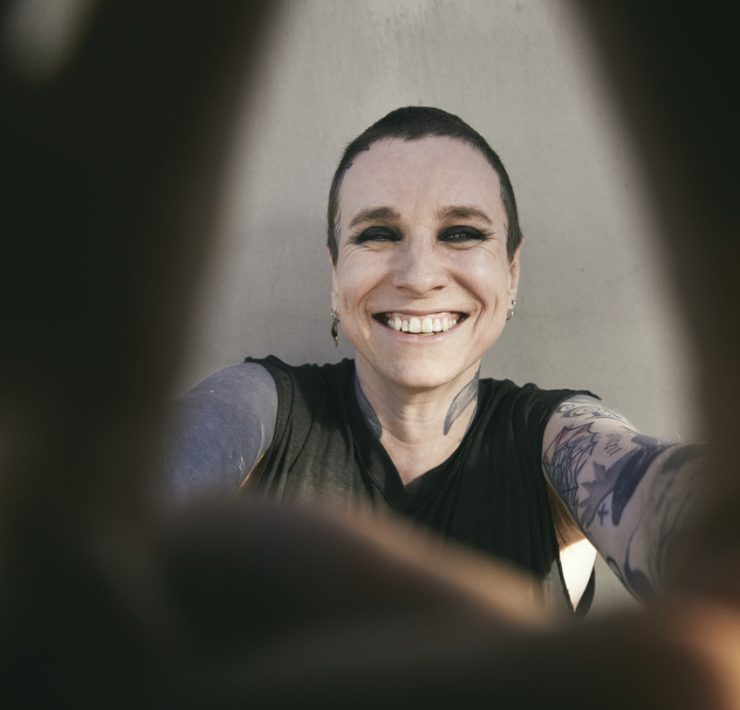Queer Hair Expression: Liberation Through Style

Ray has with OUT FRONT Magazine since February of 2020.…
Is hair just hair, or is it a form of expression that in some cases can be used to challenge the status quo? From the punk movement to the CROWN Act, hair has been at the forefront of several major political and social movements.
Hair has been used to make political statements from as early as the 18th century. Most notably, Marie Antoinette held political power through her appearance and hairstyles, occasionally going as far as affixing model ships to her dos in celebration of French naval victories. In the 1920s, shorter haircuts for women such as the bob or the pageboy caused a patriarchal uproar, and in 1940, Frida Kahlo famously painted a self-portrait of her sporting a closely cropped cut with long strands of hair scattered on her lap and at her feet.
Throughout the 70s and 80s, the underground punk scene was slowly dug up and thrust into mainstream consciousness. And with it came myriad colorful and unique hairstyles used as signifiers for the movement’s anti-establishment sentiment. Both men and women in the punk scene would sport closely shaved styles along with long spiked mohawks, effectively flipping off the gender norms of “civilized” English society at the time.
More recently, Black hair has come to the forefront of politics. Throughout the years, when Black folks were able to enter the workforce and get white-collar jobs, many were made to straighten, dye, or otherwise conform to white hairstyles in the name of professionalism. In 2019, The CROWN Act was created by Dove, the National Urban League, Color Of Change, and the Western Center on Law & Poverty. The CROWN Act, which stands for “Creating a Respectful and Open World for Natural Hair,” is a law that prohibits race-based hair discrimination and has been signed into law in 22 states and 45 cities.

Hair by Shane Wilson
For the LGBTQ community, hair acts as a similar mode of self-expression and in some cases, civil disobedience. From the extremely queer comeback of the mullet to various brightly colored hairstyles, one’s hair can act as a nod toward their sexual identity. For transgender and gender-nonconforming people, that first affirming haircut can be life-changing. Experimenting with different cuts and colors can be a fun way for queer folks to express themselves authentically.
“To quote a client of mine, they came to me a year ago with very long hair because they had transitioned, and long hair, to them, made them feel feminine. After moving out here, they embraced the love, and authenticity of being your true self,” Shane Wilson, a hairstylist at Above Ground, tells OFM.
“That day we cut her hair into a mohawk and colored it neon pink. She told me Denver has taught her that she is a woman, regardless of having long hair, and I felt like that was the most genuine thing I’ve ever heard in my 13 years of experience.”
Whether you’re proudly wearing locks to the office or shaving your head to dye it bright colors, you are a part of the liberation movement of hair. Taking back bodily autonomy for self-expression is a great way to challenge gender norms, the patriarchy, and white supremacy in this country.
What's Your Reaction?
Ray has with OUT FRONT Magazine since February of 2020. He has written over 300 articles as OFM's Breaking News Reporter, and also serves as our Associate Editor. He is a recent graduate from MSU Denver and identifies as a trans man.










